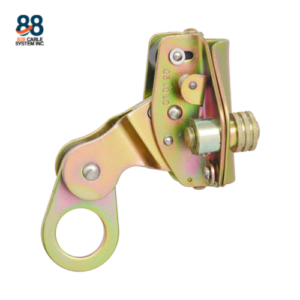Ensuring safety at heights is a critical aspect of many industrial operations, especially in the dynamic and evolving landscape of the Philippines. With temporary work activities often exposing workers to fall hazards, temporary lifeline technologies have become indispensable. This blog explores the innovative temporary lifeline solutions available in the Philippines, highlighting their benefits, features, and practical applications to help you make informed safety choices.
Understanding Temporary Lifeline Systems
Temporary lifeline systems are designed to provide fall protection during short-term or temporary work activities. Unlike permanent systems, these are adaptable and often portable, offering flexibility for various job sites. Key benefits include ease of installation, adaptability to different environments, and compliance with safety standards. Temporary systems are crucial in ensuring worker safety without the need for permanent installations.
The Need for Temporary Lifeline Solutions in the Philippines
The industrial sector in the Philippines is marked by diverse activities that often involve working at heights, such as construction, maintenance, and structural work. With a growing focus on safety, temporary lifeline solutions are essential for these short-term tasks. Compliance with OSHA standards is mandatory, with fall protection required at heights of 4 feet or more in general industry and 6 feet or more in construction. Addressing these needs effectively can prevent accidents and enhance worker safety.
Leading Temporary Lifeline Technologies
Portable Horizontal Lifelines Portable horizontal lifelines are versatile solutions ideal for various temporary work environments. They offer flexibility in installation and use, making them suitable for building sites, structural steel erection, and other dynamic settings. Their key advantage lies in their adaptability, providing reliable fall protection where permanent systems are not feasible.
Adjustable Lifeline Systems Adjustable lifeline systems are designed to accommodate different work scenarios with customizable features. These systems allow for adjustments in length and configuration, making them suitable for diverse industrial applications. Their adaptability ensures that safety measures are effectively tailored to the specific needs of each job site.
Retractable Lifelines Retractable lifelines incorporate advanced design features that enhance safety. They automatically retract, maintaining tension and reducing slack, which minimizes fall distance and impact forces. These systems are particularly useful in environments where mobility and flexibility are essential, offering both convenience and safety.
Innovative Features and Technologies
Advanced Materials Recent advancements in materials have significantly improved the durability and performance of temporary lifeline systems. New materials enhance resistance to wear, weather, and other environmental factors, ensuring long-lasting and reliable safety solutions.
Enhanced Safety Mechanisms Innovations in braking systems and impact absorption technologies have further improved the safety of lifeline systems. These enhancements ensure that the systems effectively arrest falls and reduce the risk of injury, providing greater peace of mind for workers.
Smart Technology Integration The integration of smart technologies, such as sensors and real-time monitoring systems, offers new levels of safety. These technologies provide valuable data on system performance and worker safety, allowing for proactive adjustments and interventions.
Successful Implementations in the Philippines
Example 1: Building Site Project A major building site in Manila employed temporary horizontal lifelines to ensure safety during structural work. The use of these systems allowed for secure and efficient access, demonstrating their effectiveness in a high-traffic construction environment.
Example 2: Structural Steel Erection In a recent project involving structural steel erection, adjustable lifeline systems were used to accommodate varying heights and angles. The flexibility of these systems proved essential in maintaining safety throughout the project.
Lessons Learned Both case studies highlight the importance of selecting the right lifeline system for specific tasks. Professional guidance and adherence to safety standards are key to successful implementation.
How to Choose the Right Temporary Lifeline System
Selecting the appropriate temporary lifeline system involves considering factors such as the nature of the work, the work environment, and regulatory requirements. Evaluate the system’s flexibility, safety features, and ease of installation. Professional advice can help ensure that you choose a system that meets your specific needs and complies with safety standards.
The Role of 828 Cable System in Providing Lifeline Solutions
828 Cable System is a leading provider of Temporary lifeline Solution in the Philippines . With extensive expertise and a comprehensive range of products, they offer valuable guidance on selecting, installing, and using lifeline systems. Partnering with 828 Cable System ensures that your temporary fall protection needs are met with the highest standards of safety and compliance.
Takeaway
Innovative temporary lifeline technologies play a crucial role in enhancing workplace safety in the Philippines. By exploring the latest solutions and understanding their benefits, you can make informed decisions that protect workers and ensure compliance with safety regulations. Consider upgrading your fall protection systems and consult with experts like 828 Cable System to find the best solutions for your needs.











